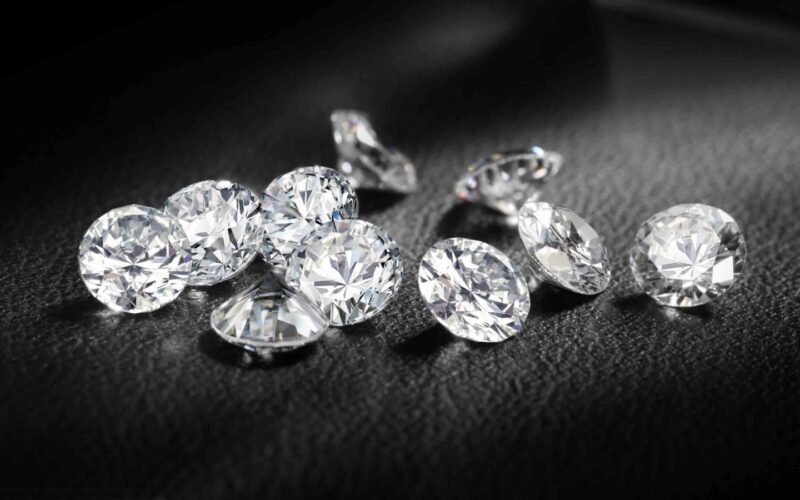Innovations and technological revolutions have taken over the world. The changes they’ve made to our lifestyles have become a vital part of our daily lives. And the diamond industry is one sector influenced by these changes.
From the mining process to the marketing techniques, technology has affected everything. This hasn’t come without benefits to the parties involved though. Science has found a way to replicate the diamond creation process. Thus, lab-grown diamonds have been introduced to the market. Mining, transportation, polishing, and grading have all become easier because of technology.
The online market also had a big hand in the changes experienced by the industry. For instance, having an online store reaches a wider audience of different ages. It saves you from paying rent for a physical store and your clients can easily contact you online.
We’ll go over the technological influences and changes in the diamond industry one by one.
1. Exploring the Mines
Diamond mining operations have always been the most costly and difficult part of the industry’s value chain. Geologists found it difficult to locate the kimberlite pipes that yield excellent-quality diamonds.
Generally, the majority of diamond explorations used magnetic surveys. The problem with the method is that it gives a lot of false-positive results. The surveys also tend to miss deeper kimberlite deposits.
However, technology has made some progress and the industry has started using seismic reflection. It’s a tool to study earthquake activity but it also gives a detailed analysis of underground rock formations.
This technology is still in the works but it can be a complete game-changer for the diamond industry.
2. Ethical Choices with Lab-Grown Diamonds
Lab-grown diamonds are not any different from the ones that are mined. The only difference is where they’re made. Mined diamonds are formed in nature while lab-grown diamonds are in laboratories.
Laboratories simulate the same creation process of diamonds in nature. No lives are put in danger to acquire these gems. Nature doesn’t suffer as much from it either. Because it came from a lab, its origins are easy to track as well. Transparency isn’t an issue.
Because of its background, the younger generation of customers is also more interested in lab-grown diamonds. Whether it’s for accessories or proposal rings, it’s viewed as a more ethical choice.
3. Tracking the Source
Transparency and traceability have always been a feat within the diamond industry. Because of this, it had unsavory activities that grew until the modern age. Its dark past still lingers, such as its association with abusive practices and the black market.
However, the blockchain may just be the technology to solve this issue. It’s a decentralized, encrypted digital ledger that can store unalterable copies of data. This can be used to catalog diamonds.
IBM is already providing the tools to make this blockchain possible. This will create a diamond registry that customers can use to track diamonds from the mine to the market. The fraud and abuse it’s been associated with will be eliminated.
This project will raise the transparency of the diamond industry and improve the trust of consumers.
4. Customer Experience and Shopping Revolution
Online shopping has been the norm ever since the pandemic. The pandemic impacted several businesses and industries. However, the online platforms became a way for them to bounce back. The diamond industry is just one of the other industries that made a huge comeback after stepping into the online market.
Because people were advised not to leave their homes, shopping online was the best way to buy commodities. Not to mention, younger prospects also take notice of online stores more often.
Therefore, you’re able to reach more prospects. Viewing your wares also isn’t limited to opening hours in a store because the website will be available 24/7.
The downside of online shopping is that your customers can’t try the jewelry before purchase. A step to addressing this is augmented reality (AR). Your customers can see what the diamond studs or accessories look like when worn.
All they need is a webcam to make this possible. While this is a big step from catalog-style e-shopping, a smooth user experience on your website is also necessary. It’s all right to have these advancements as long as the customers remain comfortable and satisfied while browsing.
5. 3D Printing Your Jewelry
3D printers are practically mainstream now in the 2020s. It’s been beneficial to designers because products are produced faster. It’s easier to correct errors and add details. As far as the jewelry industry is concerned, Lost-Wax Printing and Casting are used to make gold, silver, and bronze jewelry.
The technique used combines 3D printing technology with traditional metal casting. The results show versatile, complex, and customized pieces of jewelry. It also saves labor costs for both the seller and the customer.
The social element is also an exciting part for customers because they’re part of the process step-by-step. Being able to customize their jewelry will make it a very personal item. The shopping experience is then enhanced.
Conclusion
The diamond industry has been a beneficiary of technological advancements for years. The very process with which diamonds are acquired utilizes technology. The mining process, polishing, transportation, and marketing all need technology.
Miners need technological advancements to locate the kimberlite pipes more effectively. What they came up with is seismic reflection. This saves a lot of effort and cost compared to the false-positive yields of the magnetic surveys.
Technology has also been utilized to address the industry’s traceability and transparency issues. One is in the form of blockchain while the other is in the form of lab-grown diamonds.
By having a cleaner background, diamonds attract the starry-eyed youth as prospects. Those who support clean and green businesses will most of all enjoy purchasing lab-grown diamonds.
The diamond industry became more accessible to the youth since they launched online platforms. Prospects aged 16 to 35 could browse the wares in the safety of their homes. If the shop has AR built-in, then it makes the shopping experience more fun!
Technology has only paved the way for the diamond industry to flourish even in modern times.
Read Dive is a leading technology blog focusing on different domains like Blockchain, AI, Chatbot, Fintech, Health Tech, Software Development and Testing. For guest blogging, please feel free to contact at readdive@gmail.com.





